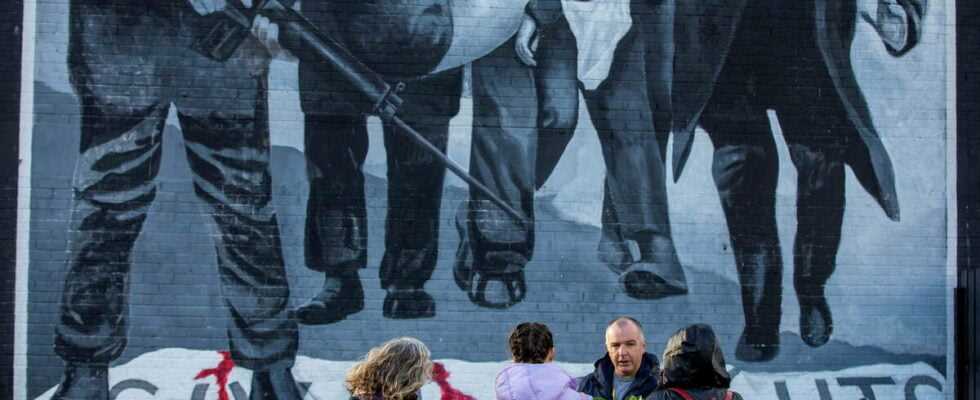Antagonisms and reconciliation
Article reserved for subscribers
A few kilometers from the border with the Republic of Ireland, the second city “in the North” remains marked by the massacre of January 30, 1972, segregation and a chronic lack of investment.
“When I look beyond these historic walls, I see a peaceful city, a city full of hope and young people who should have a prosperous future, in peace, where their roots and their families are,” announced US President Bill Clinton in 1995. His speech preceded by three years the Good Friday Accords that ended the “Troubles”, the Northern Irish civil war that lasted thirty years and claimed 3,500 lives.
But even today, Derry / Londonderry is the city with the slash, the one you don’t know what to call without offending those you meet. The river running through it separates the two communities: Unionists and Protestants on the east bank; nationalists and Catholics on the West Bank. If two road bridges and a pedestrian bridge cross it, mistrust remains. Derry is this ancient city, which withstood a Jacobite siege, but remains under the influence of another, more intimate enemy: its past.
“We will triumph”
On January 30, 1972, women, men and teenagers put on their warmest clothes to take to the streets of Bogside, one of the three major Catholic neighborhoods. They gather under the banners of the Association for Civil Rights. These nationalists draw inspiration from African-American struggles to protest police mistreatment and unjust living conditions. The military came to the streets in 1969.
“We will triumph”, sings the procession that follows a ca…
